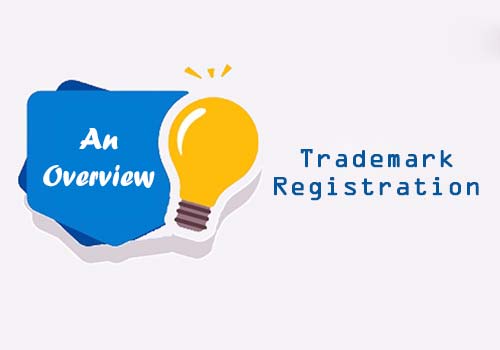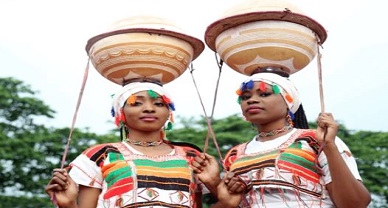
Trademark as defined under the Trade Mark Act provides a mark capable:
- Graphically representation
- Capable of distinguishing goods and services from one person from those of others
- Distinctive character
Mark includes a device, brand, heading, label, name, signature, word, letter, numeral, a combination of colors, or any combination thereof.
Some of the trademarks are mentioned below:
- Device mark
- Distinctive word mark: Apple
- Picture:
- Personal names: FORD
- Slogan: Subway (eat fresh)
- Fanciful names: Kodak
On the filing of the trademark application, the applicant by the virtue of the filing of the application can use the mark. On approval of the trademark application by the registrar, the owner can use to represent the registered user of the trademark.
In India, the application for the registration of a trademark can be provided in five registries, i.e. Delhi, Mumbai, Ahmedabad, Kolkata, and Chennai subject to the territorial jurisdiction. The territorial jurisdiction with respect to the filing application is decided to keep in mind the principle base of the applicant, in case of the foreign applicant, application to be filed where the applicant’s agents or attorney is situated.
Any lawful proprietor and bonafide user of a trademark can make the application for registration of a trademark. If the user is a prior user of the mark, he needs to submit an affidavit along with the evidence to support such a claim. Trademark application in the prescribed form TM-A which provides details of the Trade Mark is submitted before the Registry
International Filing of Trademark
If the owner wishes to file an international application, he can resort to direct filing of such application in the desired jurisdiction with or without obtaining a priority mark.
The second option is to file through the Madrid Protocol. Madrid Protocol application procedure is a system, by which the applicants can file registration applications in various jurisdictions provided the state is a member of the protocol. However, it is important to note, that priority has to be claimed within six months.
Grounds for Objection to a Trademark Application
The grounds for a refusal to grant protection to a Trademark Application is encapsulated under section 9 and section 11 of the Trademarks Act. Section 9 of the Act talks about the absolute grounds of refusal to an application and Section 11 talks about relative grounds of refusal to an application.
The absolute grounds of refusal for non-registration of a trademark include those marks:
- Which are devoid of any distinctive character;
- Which may serve in trade to designate the kind, quality, intended purpose, values, geographical origin or the time of production of the goods or rendering of the service;
- Which consists exclusively of marks or indications which have become customary in the current language or in the bonafide and established practices of the trade;
- Which deceives the public or causes confusion;
- Which contains or comprises of any matter which may hurt religious sentiments or feelings of any class or section of the citizens of India;
- Which comprises of any scandalous or obscene matter;
- Which is prohibited under the Emblems and Names (Prevention of Improper Use) Act, 1950;
- Which consists of the shape of goods which results from the nature of goods themselves;
- Which consists of the shape of goods which is necessary to obtain a technical result;
- Which consists of the shape which gives substantial value to the goods.
The relative grounds of refusal for non-registration of a trademark if:
- The mark is identical to an earlier existing trademark and the goods or services covered by such mark is similar to that of the earlier existing trademark;
- The mark is similar to an earlier trademark and the goods or services covered by such mark are similar or identical to that of the earlier existing trademark;
- The mark and its use in India is prevented by virtue of any law of passing off protecting an unregistered trademark used in the course of trade;
- The mark and its use in India are prevented by virtue of the law of copyright.
Well-Known Trademark shall be granted registration if it has gained distinctive character, However, the procedure for the determination of a well-known trademark is provided under Section 11 of the Act.
Application Procedure
The Application for registration of the trademark shall be made under section 18 of the Act by furnishing all the details and particulars. A single application can be made for registration of a trademark in different classes of goods and services.
The registrar may refuse the application or may accept it absolutely and record the reasons in writing.
After the acceptance of the application by the registrar, it is advertised in the prescribed manner in the trademark journal.
Then the advertised application will receive oppositions to registration within 4 months of it being advertised by any person and notice of opposition will be furnished upon the applicant. The applicant is required to reply to such notice of opposition by way of counter statements to the registrar within 2 months. A hearing will be scheduled if the registrar thinks fit and allow both the parties to proceed with their arguments and after due consideration to such arguments and evidence produced, adjudicate as to whether the application shall be accepted or not.
Remedies
- Infringement: The remedy available with the proprietor of a registered mark is to file a suit for infringement against the infringer. This can be done in order to restrict him to use his mark which he is using to encash upon the goodwill and reputation of the proprietor by passing off his goods or services.
- Passing off: This is the remedy available to the proprietor of an unregistered trademark whose mark has been used by any other person or proprietor to deceive the consumers and thus gain profits from such deception or confusion. Though the rights attached with an unregistered trademark are relatively less as compared to a registered trademark but the proprietor can file a suit to restrict such acts of passing off.
Tenure
The protection period of a Trademark after getting registered is 10 years and after such time it can be renewed further by the proprietor by filing a renewal application 6 months prior to the expiry of the trademark. Therefore, the proprietorship of a Trade Mark is perpetual in nature.
The following are few highlights of the amendment of Trademark Rules 2017
- Reduction in the number of forms.
- Registration of sound marks introduced through form TM- A.
- The separate Fee structure for, startups, small and medium enterprises.
- Provisions relating to Well-known marks through form TM- M.
- Hearing with the Registrar through video conferencing.
- Reduction in adjournments.
- 3D marks registration introduced through TM- A.
Author: Pratistha Sinha, Associate at IP and Legal Filings and can be reached at support@ipandlegalfilings.com.


